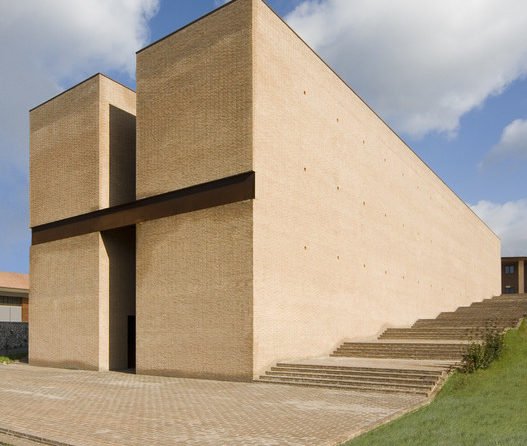We, humans have always wondered about ourselves. Who am I? What is my true being? Where do I belong? We are constantly trying to discover ourselves. This has been a quest for humans forever. Although, there is no single answer for it. It differs from person to person, as is subject to their own belief interpretation and perception.

Spirituality is an ultimate or an alleged immaterial reality. The essence of spirituality is the search to know our true selves, to discover the real nature of consciousness. It is an attempt to become aware of our spirits. Some people may find spiritual life is intricately linked to their association with church, temple, mosque. On the other hand, others may find comfort in their personal relationship with God.
Architecture is not simply the design of buildings with physical closures. On the contrary, is it an expression of thoughts, beliefs, and emotions in a built form, symbolically communicating to its users. The successful architectural expression is one, which is able to do both; provide an enriching experience and an unforgettable image.
E.V. Walter in Placeways defines spiritual space as “a specific environment of phenomena that are expected to support the imagination, nourish spiritual experience, and convey spiritual truth”. Spiritual places can be found in nature or in the built environment. The designation of a spiritual place comes when humans are able to establish a connection with inner peace and truth.
At once, architecture can invoke all senses, it can aid one to concentrate their positive energy to bring calmness to a chaotic mind, and take a peaceful mind beyond its physical form. Hence, architecture can be a power tool for spirituality. Spiritual architecture refers to a building system that facilitates us to become aware of our inner spirit.
Design Attributes of a Spiritual Built Environment
Here we are briefly discussing a few design characteristics of a spiritual space.
-
Sensory Experience
In a spiritual space, various senses are used to stimulate calm the human body.
Sound: A reverberant sound quality brings a change from the cacophony of the street in a spiritual space. A harmonious silent signifies entry to a sacred space. Sound of nature, of music and chanting, brings a sense of sound, which gives a calming effect.
Touch: A change in the temperature, like a transition from the blazing heat and pollution of a busy city to a cool and clean atmosphere can denote a spiritual space.
Smell: Flowers and incense sticks are used in spiritual spaces to stimulate positive and peaceful senses. -
Space, Form, and Scale
Human body is a module for proportioning systems. The built scale with respect to the human scale plays a vital role in the atmosphere of the space. Different scales generate different kinds of feelings and experiences for the users. Therefore, in spiritual spaces, the monumental scale has been chosen to give magnificence and majesty.
In terms of space and form, spiritual architecture is minimal and subtle. The notion of applying simple forms is basically to reduce the tension posed by form in space. This allows the individuals to experience the profound emotional connection.
-
Depicting Nature and Landscape Elements
Humans have been constantly inspired by nature. Therefore, architectural forms have been derived from mother nature as the bring a sense of peace to us. They are closely associated with our being and hence we imitate them in the environment we build. Hence, natural forms and materials are been used to create a safe space.
The temples of the Hindu, minarets of the mosque and Christian’s tradition relate to the forms of natures mountains is one such example.
Also, elements of landscapes, like plants and water body are designed for the kind of activity that is supposed to be conducted. For open interacting spaces, benches and furniture is provided. Whereas, an environment to peacefully sit and relax, soft landscaping is provided, such as grass.
These spiritual spaces, either a place of worship or meditation is significant to the lives we live today. With a chaotic lifestyle, we humans tend to lose ourselves and wind up finding ourselves in spiritual spaces.
Today, our world struggles with the consequences of our insensitivity, as climate change, political conflicts, population growth. The urban settings are being built and re-built, and as per the current scenarios. We as architects, designers and planners should consider to infuse places with richer meaning, poetics, atmosphere and strive for the spiritual essence of space.



